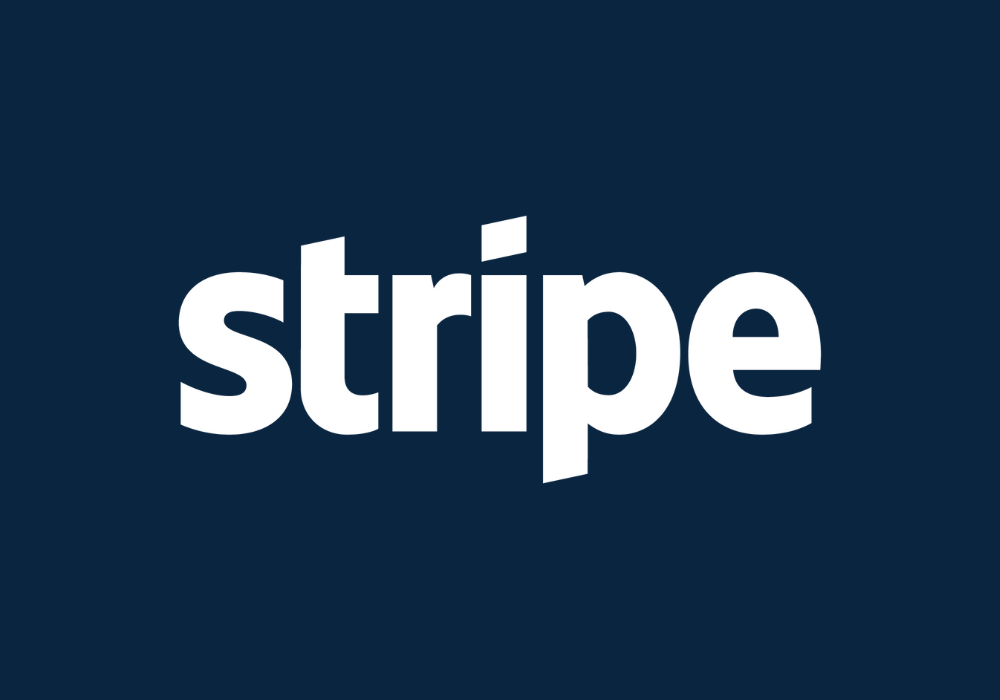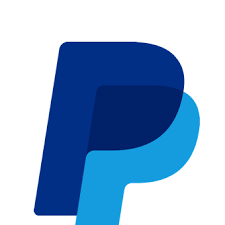As online businesses continue to flourish, the demand for secure and reliable payment processing solutions has never been greater. While Stripe has established itself as a dominant player in the market, offering a seamless payment experience, there are several other notable contenders vying for attention.
In this blog post, we will explore the top best Stripe competitors and alternatives in 2024. Whether you’re a startup, a small business, or an enterprise, having options when it comes to payment processing can help you find the perfect fit for your unique needs. Here are some alternative payment solutions to Stripe, empowering you to make an informed decision for your business.
Best Stripe Competitors and Alternatives In 2024
Quick View
- Square: Best Overall Alternative and Competitor to Stripe
- Adyen: Best for E-commerce Stores
- Paypal: Best for Global and Multiple Payment Options
- Helcim: Best for Its Cost Friendliness
- Stax: Best for Excellent Customer Service
- Authorize.net: Best for Large Businesses
Product
Key Features 01
Key Features 02
Key Features 03
- Free: no monthly fees with a flat rate of 2.9% + 30¢ per transaction
- Plus: monthly fee of $29 plus a flat rate of 2.9% + 30¢ per transaction
- Premium: charges $79 monthly with a flat rate of 2.6% + 30¢ per online transaction
- Customization and Organization
- Web designer
- Finance management
- Time-saving
- Retail support
- Client Services
- Field services
Fixed processing fee + other fees based on the payment method and location
- Risk management
- Revenue optimization
- POS Solutions
- Unified commerce
- Diverse payment methods
- Merchant accounts
- 2.9% + $0.30 per transaction for sales within the US
- 4.4% + a fixed fee based on the currency for international sales.
- 2.7% per transaction for in-person transactions.
- Easy integration with popular e-commerce platforms and shopping carts
- Support for recurring billing and subscription payments
- Fraud protection and risk management tools
- PayPal Checkout, a one-touch payment solution for faster transactions
- PayPal Credit, a financing option for customers
- Invoicing and payment tracking tools
- Mobile app for managing transactions on the go
- Access to a global customer base with support for multiple currencies and languages
- Interchange plus 0.1% + 5 cents to 0.3% + 8 cents for transactions with card present
- Interchange plus 0.2% + 10 cents to 0.5% + 25 cents for transactions without cards
- $15 for a chargeback fee
- $109 for card readers
- Point of Sale (POS) System
- Virtual Terminal
- Invoicing and Billing
- Online Payments
- Payment Processing
- Reporting and Analytics
- Monthly fee: $99–$199
- Transaction fee: Interchange + $0.08 with card present
- Transaction fee: Interchange + $0.18 without card
- Chargeback fee: $25
- Reporting and Analytics
- Invoicing and Recurring Billing
- Virtual Terminal
- Omni-Channel Payment Processing
- Integrations
- Monthly fee: $25
- POS system: $0 for Mobile POS app
- Virtual terminal: $0
- All-in-one processing fee: 2.9% + 30 cents
- Chargeback fee: $0
- Card readers: $65
- Developer-Friendly APIs
- Virtual Terminal
- Mobile Payment
- Recurring Billing
- Advanced Fraud Detection Suite
Quick Verdict
Overall Best Alternative – Square Invoices
Square Invoices offers a compelling alternative to Stripe by providing a comprehensive, all-in-one solution. It goes beyond just invoicing, encompassing a suite of tools and services that help businesses streamline their operations. With seamless integration into other
Square products, such as payment processing, inventory management, and customer relationship management, Square Invoices becomes a powerful tool for managing the entire sales cycle. This integrated approach enhances productivity, efficiency, and convenience for businesses, eliminating the need for multiple platforms and ensuring a seamless experience.
Additionally, Square’s strong reputation for user-friendly interfaces and reliable customer support adds to its appeal as a viable alternative to Stripe.
Top Alternatives and Competitors to Stripe in 2024
Square Invoices offers more than just invoicing and payment processing. With Square Invoices, you can effortlessly monitor your invoices, set up recurring invoices, attach relevant files, obtain e-signatures, and issue receipts.
By leveraging this invoicing software, you can streamline your invoice management process and effectively track the payment statuses of your customers, ensuring you stay on top of who has paid and who still owes you.
Square Invoices is an invaluable tool for business owners as it enables them to send professional invoices and timely payment reminders. Additionally, it supports various payment methods, including credit cards and Apple Pay, allowing you to cater to diverse customer preferences and enhance convenience.
Pricing
Square offers a transparent pricing structure. The free plan has no monthly charges. Instead, it has a fixed rate of 2.9% plus 30 cents per transaction.
The Plus plan costs $29 per month and includes the same flat rate of 2.9% plus 30 cents per transaction. It also provides self-serving and personalized features.
For advanced features, customers can choose the premium plan. It costs $79 per month and has a flat rate of 2.6% plus 30 cents per online transaction.
Square’s pricing model is straightforward. It aims to ensure clarity and simplicity for its users.
Features
Square offers clients the convenience of approving estimates from anywhere and effortlessly converting them into invoices with just one click.
With their digital contract feature, you can create and customize contracts with e-signature capabilities directly from your Square Dashboard. You can also utilize contract templates, create custom clauses, and track real-time progress.
Additionally, Square Invoices provides various specialized functionalities. It serves as a retail platform, supports consultants with a central console for project management and payment processing, facilitates field services with recurring invoices and reminders, and assists web designers with detailed estimates and real-time reporting.
Square’s comprehensive solution streamlines operations and enhances efficiency for a variety of industries.
Rating
Square has consistently received excellent ratings from users on reputable review platforms such as TrustRadius and G2.
On TrustRadius, a trusted site for reviewing business software, Square Invoices boasts a rating of 4.5 out of 5 stars. Likewise, Square maintains a rating of 4.5 out of 5 stars on G2, another well-regarded software review platform.
These consistently positive ratings on both TrustRadius and G2 demonstrate that users find Square’s online services, particularly Square Invoices, to be reliable, user-friendly, and effective in fulfilling their invoicing needs.
How Square Compares to Stripe
Both Square and Stripe have no monthly fees and offer flat-rate pricing, charging 2.9% + 30 cents for online payments. However, Square provides cost advantages in card-present and mobile processing, making it an economical choice.
Additionally, Square offers free point-of-sale (POS) software and comprehensive e-commerce tools, while Stripe requires third-party integration or programming. Square’s hardware options are also more affordable, and they provide a wider selection of card readers and registers.
With Square’s cost-effective solutions and inclusive offerings, businesses can efficiently manage their payments and sales across various channels, saving money and streamlining their operations.
When Should You Use Square?
If you’re looking for a versatile all-in-one POS system with a reliable payment processor, Square is your go-to choice. Its top-notch POS systems cater to various industries as well.
Square offers room for growth with additional software for loyalty plans, marketing, and even payroll management. It is highly popular and well-rated as a payment processor, offering a free POS system and the flexibility to scale with your business.
- Pricing is transparent
- Requires no monthly fee
- POS is user friendly
- Support is limited
- Occasional account holds
Adyen emerges as a leading global invoicing platform, providing a comprehensive solution for generating and managing invoices from customers worldwide. It offers a wide range of invoicing methods, including credit cards, debit cards, digital wallets, and localized payment options.
Key features of Adyen include its unified commerce solution, facilitating smooth invoicing across various channels. It also offers dynamic currency conversion capabilities and effective risk management tools.
By adopting an API-driven approach and providing thorough documentation, Adyen ensures easy integration and customization for developers, accommodating their unique invoicing requirements.
Pricing
Adyen utilizes a flexible pricing model based on per-transaction fees that vary depending on the payment method and geographic location. Businesses with high transaction volumes or unique requirements can benefit from a customized pricing structure offered by the platform.
Adyen does not require any setup or monthly fees for its users. Instead, each transaction carries a fixed processing fee in addition to fees specific to the selected payment method.
Features
Adyen offers multiple merchant accounts, making it convenient for international businesses to have separate accounts for each country of operation. They also provide sub-merchant accounts for third parties like contractors and suppliers.
Adyen’s business accounts support multiple currencies worldwide, allowing for seamless payment management. The integration of digital payment solutions with Adyen is user-friendly and customizable, from the user interface to checkout platforms.
Their point-of-sale (POS) solutions accept payments worldwide and offer customization options, while their global acquisition ensures simplified international transactions.
Adyen prioritizes risk management and fraud prevention while providing tools for revenue optimization. Additionally, they offer card-issuing options with full control over spending limits and transparent pricing.
Rating
Adyen Invoicing has received a rating of 4.5 stars on TrustRadius and 3.5 stars on G2, according to user reviews on these platforms. These indicate that users are highly satisfied with the solution.
Some users express lower satisfaction or experience challenges with the solution on G2. It’s worth noting however that user ratings can vary across different platforms due to various factors, including user demographics, individual experiences, and specific needs.
How Adyen Compares to Stripe
Adyen and Stripe offer different pricing models, with Stripe’s flat-rate pricing being simpler to understand and estimate potential fees, particularly for small businesses.
However Adyen, on the other hand, stands out in a few areas. It provides better sales support by utilizing online and offline payment data to offer valuable sales insights and create a consistent shopping experience.
Additionally, Adyen‘s interchange-plus pricing model can be more cost-effective, especially for high-volume businesses, even with its minimum monthly invoice requirement. Moreover, Adyen places a strong emphasis on security, offering customizable risk rules, settings, and industry-specific risk tools.
When Should You Use Adyen?
You should use Adyen when you are expanding your business globally or running an e-commerce store. Adyen’s versatile payment solution supports a wide range of international payment methods, allowing you to cater to diverse customer preferences and comply with local regulations.
Whether you are venturing into new markets or operating in the digital realm, Adyen equips you with the tools and capabilities to drive growth and success in today’s evolving business landscape.
- No setup fee
- Payment accepted across several channels
- Responsive customer service
- The pricing model is complex
- Limited invoicing
Founded in 1998, PayPal is a globally recognized and popular payment platform offering a comprehensive suite of services for businesses and individuals.
It has established itself as a strong contender in the online payment processing space, competing with and serving as an alternative to Stripe. With its unique features, pricing, and advantages, PayPal caters to a wide range of users and provides secure and efficient management of finances.
As a global online payment system, PayPal enables users to securely send and receive money, make online purchases, and efficiently manage their finances. With over 377 million active users and support for 25 currencies, PayPal has become one of the largest and most trusted payment platforms in the world.
Pricing
To accommodate diverse business requirements, PayPal provides a range of pricing plans. When it comes to online transactions, PayPal applies a fee of 2.9% plus $0.30 per transaction for sales within the United States.
For international sales, the fee is 4.4% plus a fixed fee based on the currency used. In the case of in-person transactions, PayPal charges a fee of 2.7% per transaction.
Additionally, PayPal offers custom pricing options for businesses with high transaction volumes or unique business models.
Features
PayPal boasts a versatile and powerful payment platform, equipped with a diverse range of features. It seamlessly integrates with popular e-commerce platforms and shopping carts, ensuring smooth transactions.
Additionally, it offers support for recurring billing and subscription payments, providing convenience for businesses and customers alike. PayPal’s advanced fraud protection and risk management tools enhance security measures. With PayPal Checkout, transactions are expedited, simplifying the payment process.
Furthermore, PayPal Credit serves as a financing option for customers, expanding purchasing opportunities. Invoicing and payment tracking tools enable efficient financial management, while the mobile app allows for on-the-go transaction monitoring.
Lastly, PayPal’s global reach enables businesses to tap into a vast customer base, supporting multiple currencies and languages.
Rating
PayPal has consistently received high ratings from both users and industry experts. On Trustpilot, PayPal has a rating of 4.1 out of 5 stars, based on over 22,000 reviews. Users appreciate the platform’s ease of use, security features, and wide acceptance among merchants.
How PayPal compares to Stripe
When it comes to payment processing platforms, PayPal and Stripe stand out as reputable options, each with its own unique strengths. PayPal has the advantage of a larger user base and widespread consumer recognition, which helps build trust and increase conversion rates.
However, Stripe offers a range of advanced developer tools and APIs, making it a preferred choice for businesses with complex integration needs.
Still, PayPal supports a wide variety of currencies and countries, making it well-suited for enterprises with a global customer base.
When should you use PayPal?
PayPal is an excellent choice for businesses that prioritize global reach, ease of use, and a recognizable brand. It is particularly well-suited for small to medium-sized businesses that require a simple and straightforward payment processing solution.
Additionally, businesses that cater to a global audience or have a significant number of international transactions may benefit from PayPal’s extensive support for multiple currencies and countries.
- Extensive global reach and support for multiple currencies
- A trusted and recognized brand that can help increase conversions
- A comprehensive suite of features for managing payments, invoicing, and financing
- Higher fees for international transactions compared to Stripe
- Less advanced developer tools and APIs compared to Stripe
Helcim is a Canadian-based payment processing company that provides businesses with the tools and services needed to accept credit card payments both online and in-person.
Founded in 2006, Helcim has grown to become a reputable and reliable payment processor, catering to businesses of all sizes across various industries.
With a focus on transparency, competitive pricing, and excellent customer support, Helcim has established itself as a top choice for businesses looking for an alternative to Stripe.
Pricing
Helcim provides businesses with a simple and transparent pricing model that eliminates hidden fees and long-term contracts.
Their pricing structure consists of a single monthly fee and a per-transaction fee, which varies based on the type of transaction—whether it is conducted online, in-person, or keyed.
For card-present transactions, the fee ranges from Interchange plus 0.1% to 0.3%, with an additional 5 cents to 8 cents.
Meanwhile, card-not-present transactions incur a fee of Interchange plus 0.2% to 0.5%, along with 10 cents to 25 cents. Helcim also offers a chargeback fee of $15 but refunds the charge for disputes settled in the merchant’s favor.
In addition, businesses have the option to purchase a card reader for $109 and can benefit from automatic volume discounts. This transparent pricing structure enables businesses to easily comprehend and anticipate their payment processing costs.
Features
Helcim delivers a comprehensive range of features designed to cater to businesses of all sizes. Their offerings include versatile payment processing capabilities, supporting major credit cards, debit cards, and mobile wallets such as Apple Pay and Google Pay.
With an online payment gateway, businesses can seamlessly accept payments through their website, mobile app, or e-commerce platform.
Helcim’s built-in invoicing and billing system simplifies the process of creating, sending, and managing invoices. Additionally, the virtual terminal feature enables businesses to accept payments over the phone or through mail orders.
The fully integrated point of sale (POS) system works harmoniously with Helcim’s payment processing services. To empower businesses with valuable insights, Helcim provides robust reporting and analytics tools, enabling effective tracking of sales, payments, and customer data.
Rating
Helcim has received positive reviews from both customers and industry experts, with an average rating of 4.5 out of 5 stars on various review platforms. Users praise the platform for its transparent pricing, excellent customer support, and robust feature set.
How Helcim Compares to Stripe
Helcim and Stripe are two platforms that provide payment processing features, but they have some important differences. One of the main distinctions is the way they charge fees.
Helcim has a simple pricing system with a fixed monthly fee and a fee for each transaction, making it easy to understand. On the other hand, Stripe has a more complicated pricing structure. Another difference is the level of customer support. Helcim is known for its excellent customer service, while the feedback about Stripe’s support is mixed.
When Should You Use Helcim?
Helcim is an excellent choice for businesses looking for a reliable and transparent payment processing platform with a strong focus on customer support. It is particularly well-suited for small to medium-sized businesses that value predictable pricing and a comprehensive feature set.
However, if your business has a significant international presence or requires native integrations with specific e-commerce platforms, you may want to consider other alternatives like Stripe.
- Transparent and competitive pricing
- Excellent customer support
- Comprehensive feature set
- Limited international availability
- No native integrations with some popular e-commerce platforms
Stax is a payment processing platform that provides businesses with a comprehensive suite of tools to accept and manage payments. It offers a range of services, including credit card processing, invoicing, recurring billing, and analytics.
Stax aims to simplify payment processing for businesses by offering transparent pricing, easy-to-use tools, and excellent customer support.
Pricing
Stax offers a subscription-based pricing model, with plans starting at $99 per month for businesses processing up to $500,000 in annual credit card sales. The pricing is based on a flat monthly fee, plus a per-transaction fee that varies depending on the type of transaction (e.g., card-present or card-not-present).
This pricing model can be more cost-effective for businesses with higher transaction volumes, as it eliminates the percentage-based fees typically charged by other payment processors.
Features
Stax provides businesses with a wide range of features to effectively manage their payments. They support various payment methods, including credit cards, debit cards, ACH transfers, and mobile wallets like Apple Pay and Google Pay.
With Stax’s virtual terminal, businesses can easily accept payments over the phone or through mail orders without the need for additional equipment. Stax simplifies invoicing and recurring billing, allowing businesses to create and send invoices while setting up recurring payments for subscription-based services.
The platform also offers robust reporting and analytics tools, empowering businesses to track sales, monitor trends, and make data-driven decisions. By integrating with popular business tools and platforms like QuickBooks, Salesforce, and Zapier, Stax streamlines workflows and boosts efficiency for businesses.
Rating
Stax has garnered acclaim from users, earning an impressive average rating of 4.5 out of 5 stars on Trustpilot and G2. Users highly value its transparent pricing, user-friendly interface, and prompt customer support.
How Stax Compares to Stripe
Stax and Stripe are two leading payment processing platforms with distinct differences. Stax employs a subscription-based pricing model that proves advantageous for businesses dealing with high transaction volumes, whereas Stripe’s pay-as-you-go pricing structure suits smaller enterprises or those with lower transaction volumes.
In terms of features, both platforms offer an extensive array; however, Stax sets itself apart by offering supplementary tools such as invoicing and recurring billing.
When should you use Stax?
Stax is a good option for businesses that prioritize transparent pricing, excellent customer service, and advanced security features. It may be particularly useful for small to medium-sized businesses that don’t require a large number of integrations and are willing to pay slightly higher transaction fees for the added security and support.
- Transparent pricing
- Excellent customer service
- Advanced security features
- Limited integrations
- Higher transaction fees
Authorize.net is a payment gateway service that enables businesses to accept payments online through credit cards, e-checks, and alternative payment methods. It acts as an intermediary between the merchant, the customer, and the financial institutions involved in the transaction.
The platform facilitates secure, reliable, and efficient payment processing, providing businesses with the tools they need to handle transactions smoothly.
Pricing
Authorize.net offers businesses flexible pricing plans tailored to their specific needs. The pricing structure includes setup fees, monthly gateway fees, and transaction fees, ensuring transparency and affordability. Competitive rates can be expected based on the selected plan.
Authorize.net also provides value-added services and extra features for customization, though these may come at an additional cost.
Pricing details include a monthly fee of $25, an all-in-one processing fee of 2.9% + 30 cents per transaction (or 10 cents per transaction and 10 cents batch fee), and an ACH/e-check processing fee of 0.75% per transaction.
Chargeback fees are not applicable, and costs for POS systems, card readers, and terminals are handled by third-party vendors.
Features
Authorize.net offers a range of valuable features for businesses. Their advanced fraud detection suite helps prevent fraudulent transactions and increases security. The recurring billing feature simplifies the management of subscription-based or recurring payment plans.
The virtual terminal enables businesses to accept phone and mail order payments, expanding their payment options. Mobile payment solutions allow for convenient on-the-go transactions through smartphones and tablets.
Authorize.net also provides developer-friendly APIs and resources for seamless integration of their payment processing capabilities into websites or applications. With these features, businesses can enhance security, convenience, and flexibility in their payment processes.
Rating
Authorize.net enjoys a strong reputation in the industry, reflected in its consistently high ratings. While specific ratings may vary, the platform typically receives positive feedback for its reliability, security, and customer support.
Many businesses appreciate the ease of use, extensive documentation, and range of features offered by Authorize.net.
How Authorize.net compares to Stripe
While both Authorize.net and Stripe are reputable payment gateway providers, there are notable differences between them. Stripe is often favored by startups and developers due to its modern API, developer-friendly environment, and global reach.
On the other hand, Authorize.net appeals to businesses that require a more established and reliable payment gateway, with advanced fraud detection tools and a long-standing reputation in the industry.
Additionally, Authorize.net offers more customization options and has a wider range of integrations with third-party applications.
When should you use Authorize.net?
Authorize.net is a trusted payment gateway solution suitable for various business needs. Established businesses seeking reliability and a proven track record can rely on Authorize.net’s long-standing presence in the industry.
It also caters to high-risk industries by offering advanced fraud detection tools to mitigate risks associated with fraudulent transactions and chargebacks.
For businesses requiring customization and seamless integration with existing systems, Authorize.net provides a wide range of options. Its virtual terminal feature is particularly beneficial for businesses accepting phone and mail order payments.
Additionally, Authorize.net supports scalability, with solutions for large transaction volumes, recurring billing, and mobile payments, enabling businesses to adapt to evolving customer demands.
- Established Reputation
- Advanced Fraud Detection
- Extensive Documentation
- Complex Setup Process
- Additional Costs for Value-Added Services
Factors to Consider When Choosing Alternatives to Stripe
When considering alternatives to Stripe for your payment processing needs in 2024, there are several important factors to take into account. Here are some key considerations to help you choose the right solution:
Payment Features and Capabilities
Evaluate the range of payment features and capabilities offered by the alternative solution. Look for options that support various payment methods, including credit cards, digital wallets, and international payments. Consider whether the alternative provides recurring billing, invoicing, subscription management, and other relevant functionalities that align with your business requirements.
Integration and Developer-Friendliness
Assess the ease of integration with your existing systems, platforms, and applications. A robust API (Application Programming Interface) and developer-friendly documentation can make the integration process smoother. Check if the alternative offers software development kits (SDKs), plugins, or pre-built integrations for popular e-commerce platforms, such as Shopify, WooCommerce, or Magento.
Security and Compliance
Payment security is crucial for any business handling customer transactions. Ensure that the alternative you choose is Payment Card Industry Data Security Standard (PCI-DSS) compliant. Look for additional security features like fraud detection and prevention mechanisms, tokenization, and encryption to safeguard sensitive customer data.
Pricing and Fees
Compare the pricing models and fee structures of the alternative providers. Some may charge a flat fee per transaction, while others may have tiered pricing based on transaction volume. Take into account the overall cost, including setup fees, monthly charges, and any additional fees for specific features or services. Consider your business’s projected transaction volume and growth to ensure the pricing remains favorable in the long term.
International Support
If your business operates globally or plans to expand internationally, consider the alternative’s support for international payments and currencies. Look for solutions that offer multi-currency support, localized payment methods, and compliance with regional regulations, such as the European Union’s General Data Protection Regulation (GDPR).
Customer Support and Reliability
Consider the level of customer support provided by the alternative. Look for providers that offer responsive customer support channels, such as live chat, email, or phone. Additionally, reliability and uptime are critical for uninterrupted payment processing. Research the alternative’s track record and reputation to ensure they have a reliable infrastructure and minimal downtime.
Scalability and Flexibility
Assess whether the alternative can scale alongside your business as it grows. Consider the solution’s capacity to handle increasing transaction volumes without compromising performance or incurring additional costs. Look for options that allow customization and flexibility to adapt to your evolving business needs.
User Experience and Interface
Evaluate the user experience and interface of the alternative’s payment gateway. A user-friendly interface can simplify the payment process for your customers, leading to higher conversion rates. Consider the checkout experience, mobile responsiveness, and any customization options available to align with your brand identity.
Reputation and User Reviews
Conduct thorough research on the alternative’s reputation and user reviews. Explore online forums, review websites, and social media platforms to gather insights from other businesses that have used the solution. Pay attention to both positive and negative feedback to get a comprehensive understanding of the alternative’s strengths and weaknesses.
Our Methodology in Choosing Stripe’s Competitors and Alternatives
When selecting Stripe’s competitors and alternatives, we followed a comprehensive methodology to ensure a thorough evaluation of each option. By employing this methodology, we aimed to provide a comprehensive and informative overview of the top competitors and alternatives to Stripe in 2024, empowering businesses to make well-informed decisions when selecting a payment processing solution.
Here’s an overview of our approach:
General Information about the Software
We gathered general information about each alternative payment processing software, including the company’s background, years in operation, target market, and notable clients. Understanding the software’s foundation and expertise provides insights into its credibility and industry standing.
Pricing
We analyzed the pricing models and fee structures of each alternative. We considered factors such as transaction fees, setup costs, monthly fees, and any additional charges for specific features or services. By comparing pricing options, we aimed to identify alternatives that offer competitive and cost-effective solutions.
Features
We conducted an in-depth analysis of the features offered by each alternative payment processing solution. We assessed their capabilities in terms of payment methods supported (e.g., credit cards, digital wallets, international payments), recurring billing, invoicing, subscription management, fraud detection, and security measures. This evaluation allowed us to gauge which alternatives provide robust and comprehensive functionality.
Comparison with Stripe
We compared each alternative directly to Stripe, highlighting their similarities and differences. This comparison involved evaluating factors such as pricing, features, security, scalability, integration options, and user experience. By contrasting the alternatives with Stripe, we aimed to provide a context for readers to make informed decisions based on their specific needs and preferences.
Pros and Cons
We identified the key advantages and disadvantages of each alternative. This involved weighing factors such as ease of use, customer support, international support, developer-friendliness, and customization options. Presenting the pros and cons enabled us to present a balanced perspective on the strengths and weaknesses of each alternative.
User Reviews and Ratings
We analyzed user reviews and ratings from various sources, including online forums, review websites, and social media platforms. By aggregating user feedback, we aimed to provide insights into real-world experiences with each alternative. These user perspectives offer valuable information on aspects like ease of implementation, reliability, customer support, and overall satisfaction.
When to Use the Stripe’s Alternative
Lastly, we provided guidance on when businesses might consider using a specific alternative to Stripe. This involved considering factors such as business size, industry, specific payment requirements, international operations, and growth plans.
By highlighting the use cases for each alternative, we aimed to help readers identify the most suitable option for their unique needs.
Frequently Asked Questions
Conclusion
There are strong competitors and alternatives to Stripe in the online payment processing industry. PayPal remains a prominent competitor, while Helcim, Square, and Adyen offer viable alternatives. Businesses can explore these options to find a suitable payment processing solution that aligns with their specific needs.
Furthermore, for those looking for cost-effectiveness, comparing pricing and features is crucial to identify cheaper alternatives based on transaction volume and business requirements.
With a range of options available, businesses have the opportunity to select the most suitable competitor or alternative to Stripe in the ever-evolving realm of online payments.
 Sections of this topic
Sections of this topic






















